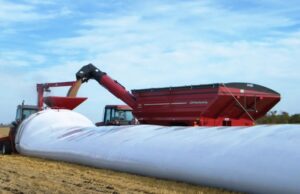Name of Work
UKRAINE: VEGETABLE OIL EXPORT LOGISTICS
Market Research
Brief Description
This far-reaching research addresses the main aspects of functioning of the Ukrainian exports of vegetable oils starting with oilseeds processing and oil production, and along its entire way to seaport exports terminals and railway transshipments.
The paper offers a detailed discussion of the process of oilseeds processing and vegetable oils production in Ukraine, and Ukraine’s current and prospective exports potential in terms of the market balance items and their changes. The main links of the exports logistical chain discussed in this research are plant economy, including facilities for storage and shipment of vegetable oils, automobile and railway transport, and sea ports. Not less important in terms of logic expenses is the processes of issuance of the necessary export documents (especially with regard to the problems with sunflower oil exports to the EU) and delivery organization. Problems and costs analysis was carried out for all links of the logistical chain.
Our research also describes activities of all main players in the market of vegetable oils exports: producers, traders, mediators, forwarders, exporters, and their impact on price setting in the Ukrainian market of vegetable oils exports. The paper offers an approximate estimate of contribution of each group of the market participants and each logistic link to the final price of oil in a port.
The paper also analyzes national policy related to development of exports infrastructure in Ukraine (or impeding it), prospects of the growth of oilseeds and oils production in Ukraine as well as development of vegetable oils logistic with the respective export prospects. There are also data characterizing Ukraine’s foreign trade in vegetable oils and evaluation of the extreme importance of Ukraine’s place in the global vegetable oils market.
Table of Contents
1. Research Summary
2. Vegetable Oils Market
2.1. Overview
2.2. Main Trends:
2.2.1. Production
2.2.2. Consumption and Trade
2.3. Development Prospects
3. Production Facilities
3.1. Industrial Oil-and-Fat Companies
3.1.1. Geography
3.1.2. Specialization (Type of Oil, Crude/Pre-Packed)
3.1.3. Production Volumes, Producers Rating
3.1.4. Description of Leading Producers, Company Owners
3.2. Small Producers
3.3. Development Prospects of Production Facilities
4. Foreign Trade
4.1. Exports
4.1.1. Main Trends
4.1.2. Indicators, Dynamics, Geography, Etc.
4.1.3. Leading Exporters and Foreign Buyers
4.1.4. Assessment of Ukraine’s Place in Global Vegetable Oils Market
4.2. Imports
4.2.1. Main Trends and Indicators
5. Way of Oil from Factory to Exports
5.1. General Overview
5.2. Exports Flows Geography
5.3. Main Links of Logistic Chain
5.3.1. Description and Succession
5.3.2. Approximate Added Value and Share in Final Price, Impact on Price Setting
5.4. Main Groups of Participants of Vegetable Oils Market
5.4.1. Description
5.4.2. Role in Logistical Chain
5.5. Main Logistics Problems
6. Producers’ Capacity for Storing Unpacked Oils
6.1. Place in Logistical Chain of Vegetable Oils Trade
6.2. Storage Facilities Capacity
6.2.1. In General for Ukraine
6.2.2. For Companies
6.3. Technical Condition
6.3.1. Main Design and Technical Characteristics
6.3.2. Technical Condition
6.3.3. Collection/Loading Capacity, Correspondence with Transportation Potential
6.4. Capacity Development Prospects
7. Truck Transportation
7.1. Place in Logistical Chain of Vegetable Oils Trade
7.2. Description of Oils Truck Transportation
7.2.1. Main Truck Transportation Advantages
7.2.2. Main Geography
7.2.3. Road Tankers Fleet, Availability of Specialized Machines
7.3. Approximate Cost of Transportation and Its Correlation with Distance
7.4. Problems and Prospects of Truck Transportation
8. Railway Transportation
8.1. Place in Logistical Chain of Vegetable Oils Trade
8.2. Description of Railways Transportation of Grain
8.2.1. Main Transportation Directions and Volumes
8.2.2. Export Transshipments
8.2.3. Availability and Condition of Oil Tanks Fleet
8.3. Cost of Railway Transportation
8.3.1. Railway Tariffs and Their Components, Dynamics
8.3.2. Calculation of Cost for Main Transportation Directions
8.3.3. Tariffs and Costs Impact on Transportation Volumes and Profitability of Oil Trade
8.4. Organization of Transportation
8.5. Lease and Purchase of Oil Tanks
8.5.1. Advantages/Disadvantages
8.5.2. Private Transport Operators and Owners
8.6. Problems and Prospects of Railway Transportation Development
9. Sea Ports
9.1. Place in Logistical Chain of Vegetable Oils Trade
9.2. Description of Port Industry in Terms of Oils Trade
9.2.1. Ports Working with Oils, Their Comparison: Main Characteristics, Received Vessels
9.2.2. Main Port Terminals of Vegetable Oils, Their Comparison, Technical Equipment
9.2.3. Methods of Port Transshipment of Vegetable Oils
9.2.4. Volumes and Dynamics of Exports/Imports of Vegetable Oils Through Ports
9.3. Owners and Operators of Port Terminals
9.4. Tariffs and Cost
9.4.1. Port Tariffs and Other Components of Transshipment Cost, Dynamics
9.4.2. Impact on Profitability of Vegetable Oils Trade
9.4.3. Freight as Element of Impact on Final Cost
9.5. Competition among Ports for Vegetable Oils Flow
9.6. Legal Basis for Operations of Ports and Terminals of Vegetable Oils, Their Interaction with State-Owned Ports
9.7. Problems and Prospects
9.7.1. Current Problems and Ways to Solve Them
9.7.2. Prospects for Construction of Port Terminals for Vegetable Oils and Growth of Exports Potential
10. Other Logistical Expenses
10.1. Licensing
10.2. Certification
10.3. Other Costs
11. National Policy on Vegetable Oils Logistics
12. Forwarders’ Activities
12.1. Main Methods of Work and Cooperation with Trading Companies
12.2. Large Ukrainian Forwarders
13. Ways of Decreasing Logistic Expenses
13.1. Methodology of Calculation of Logistic Expenses
13.2. Ways of Decreasing Logistic Expenses
13.3. Forwarder in Trading Company: Advantages/Disadvantages
14. Development Prospects of Vegetable Oils Exports
15. Statistics
16. Appendixes
Volume
175 pages (11 ppt Times New Roman), incl. main part – 140 pages, + statistics and main appendixes
Additional Appendixes
Database of all Ukrainian oilseeds producers, database of all Ukrainian oilseed processors (MS Excel, in Ukrainian)
Set
-
document Adobe Acrobat / Reader (*.pdf)

-
+ printed copy (optional)
-
additional appendixes
Russian Version
see “Украина: логистика экспорта растительных масел”
Payment Forms
-
by cash in our office;
-
by bank transfer;
-
by international payment card on site of this work







